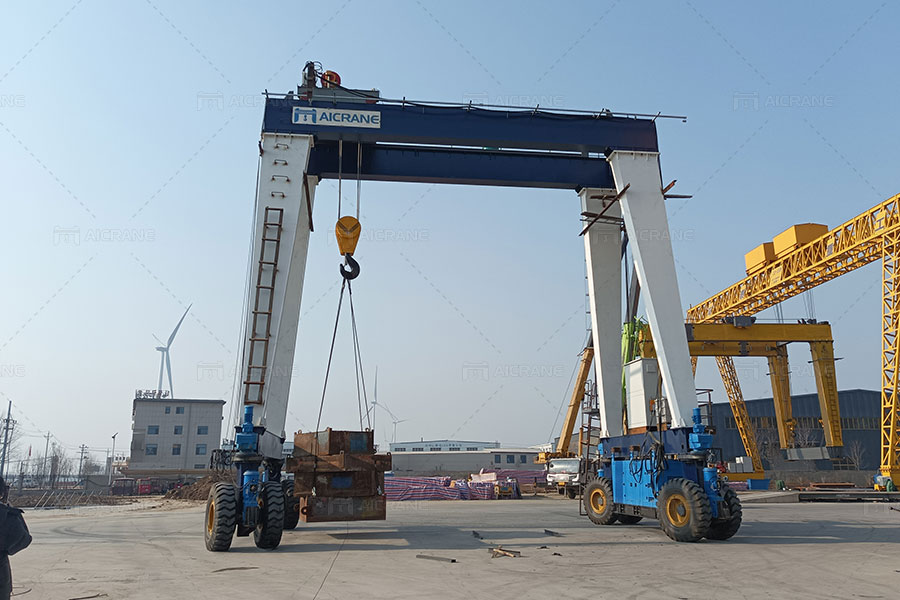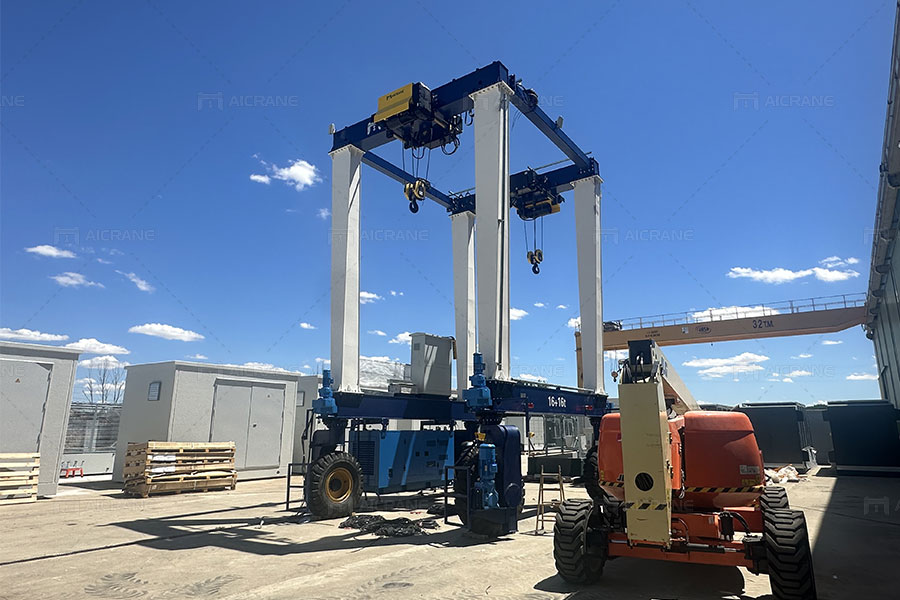Rubber Tyred Gantry (RTG) cranes are a staple in ports, container terminals, and large industrial yards. Built for high performance and flexibility, these cranes operate in harsh environments where they are constantly exposed to humidity, salinity, corrosive elements, dust, and extreme temperatures. One of the most important ways to protect these valuable machines and ensure their longevity is through effective surface treatment.
This article explores the main surface treatment options for rubber tyre gantry cranes – painting, galvanizing, and other advanced treatments—and explains how these choices impact durability, maintenance, and overall performance.

Why Surface Treatment Matters for RTG Cranes
Surface treatment is not just about aesthetics. It is a fundamental process that:
-
Prevents corrosion and material degradation,
-
Enhances UV resistance,
-
Reduces maintenance costs over time,
-
Prolongs the service life of structural components,
-
Ensures safe operation in harsh environments, especially near salty coastal air or chemically active industrial zones.
Without proper surface protection, an RTG crane’s structural integrity could be compromised within just a few years, leading to high repair costs and operational downtime.
1. Painting: The Most Common Surface Protection Method
Overview:
Painting remains the most widely used and cost-effective method for protecting the surface of RTG moveable gantry cranes. It involves the application of protective coatings that prevent oxidation and chemical reactions on steel surfaces.
Types of Paint Systems:
a. Epoxy Primer Coating:
Epoxy primers form a strong bond with the base metal, providing excellent adhesion for subsequent paint layers. They offer resistance to moisture and chemicals, making them ideal for harsh environments.
b. Intermediate Coating:
This layer adds further thickness and protection. Epoxy or polyurethane-based intermediates are typically used to enhance the durability and wear resistance of the system.
c. Topcoat Finish:
Polyurethane or acrylic-based topcoats are often used to provide UV resistance, color retention, and weatherproofing. These also give the crane its final aesthetic appearance.
Surface Preparation:
Before painting, surface preparation is critical. This usually involves:
-
Sandblasting or shot blasting to remove rust and mill scale,
-
Achieving a specific surface roughness for paint adhesion (usually SA 2.5 level or better),
-
Applying coatings in a controlled environment or on-site using spray guns.
Advantages:
-
Cost-effective and widely available.
-
Easy to repair and touch up.
-
Available in a wide range of colors and finishes.
Limitations:
-
Requires regular maintenance and repainting.
-
Susceptible to mechanical damage or impact chipping.
-
Lower lifespan compared to galvanizing in highly corrosive environments.

2. Galvanizing: Superior Corrosion Resistance
Overview:
Hot-dip galvanizing involves immersing steel components into molten zinc, forming a metallurgical bond between zinc and the base steel. This creates a robust, long-lasting corrosion-resistant coating.
How It Works:
-
The zinc coating acts as a sacrificial anode that corrodes in place of the steel.
-
It also forms a tight barrier that protects the steel from environmental exposure.
Applications in RTG Cranes:
While full galvanizing of an entire RTG gantry crane structure is rare due to size and cost, certain high-risk components (such as stairways, ladders, railings, or small steel structures) are often galvanized for added protection.
Advantages:
-
Long-term protection—often up to 50 years in low-corrosive environments.
-
Minimal maintenance needed.
-
High resistance to mechanical abrasion and environmental damage.
-
Uniform coverage, including hard-to-reach areas.
Limitations:
-
Costlier than painting.
-
Limited in size—large RTG components may not fit into galvanizing tanks.
-
Difficult to apply in the field; usually performed in specialized facilities.
3. Duplex Systems: Painting Over Galvanizing
In highly corrosive or coastal environments, a duplex system—combining galvanizing with a topcoat of paint—provides the best of both worlds.
Benefits:
-
The galvanized layer offers corrosion protection.
-
The paint provides UV resistance and color customization.
-
Significantly extended service life compared to either method alone.
This approach is often used for crane components expected to have a long service life without frequent repainting.
4. Metallizing (Thermal Spray Coating)
What It Is:
Metallizing involves spraying molten zinc, aluminum, or other metals onto the surface of the steel to create a protective coating. It is an alternative to galvanizing, especially when large structures are involved.
Advantages:
-
Can be applied on-site for large or pre-assembled RTG structures.
-
Provides excellent corrosion resistance.
-
Paint can be applied over metallized surfaces for aesthetic and functional benefits.
Limitations:
-
Requires specialized equipment and trained operators.
-
Slightly higher cost than painting alone.
5. Powder Coating (Selective Use)
Though not commonly used for the full crane structure, powder coating is sometimes applied to small steel components or accessories like electrical boxes, stairs, or ladders.
Features:
-
Smooth, even surface finish.
-
Strong resistance to chipping, scratching, and fading.
-
Eco-friendly—contains no solvents.
However, powder coating is not suitable for large structures exposed to continuous mechanical stress or direct sunlight over decades.
Factors to Consider When Choosing a Surface Treatment
1. Environment:
Is the RTG crane operating near saltwater, in a marine terminal, or a dry inland area? High-salinity or chemical-laden atmospheres demand higher-grade corrosion protection.
2. Maintenance Capacity:
If regular maintenance is difficult or costly, opt for a longer-lasting treatment like galvanizing or duplex systems.
3. Budget:
Initial gantry crane cost versus long-term savings must be evaluated. While galvanizing is more expensive upfront, it saves on maintenance over time.
4. Crane Usage & Lifecycle:
For cranes expected to operate for decades in tough environments, durable solutions like duplex coating or metallizing are recommended.
Conclusion
Selecting the right surface treatment for rubber tyred gantry cranes is a vital decision that affects not just the crane’s appearance but its durability, performance, and total cost of ownership. While painting remains the go-to solution for many operators due to its cost-effectiveness and ease of application, advanced treatments like galvanizing, metallizing, and duplex systems provide superior protection in more demanding conditions.
Ultimately, a well-chosen surface treatment plan, tailored to the crane’s operating environment and expected lifecycle, can drastically improve the crane’s reliability and minimize costly downtime. Whether you’re a port operator, logistics manager, or industrial crane user, understanding your surface protection options ensures your RTG investment stays strong for years to come.